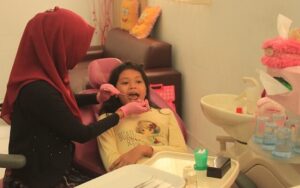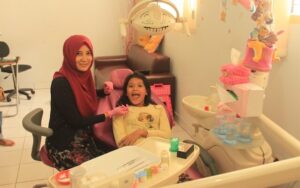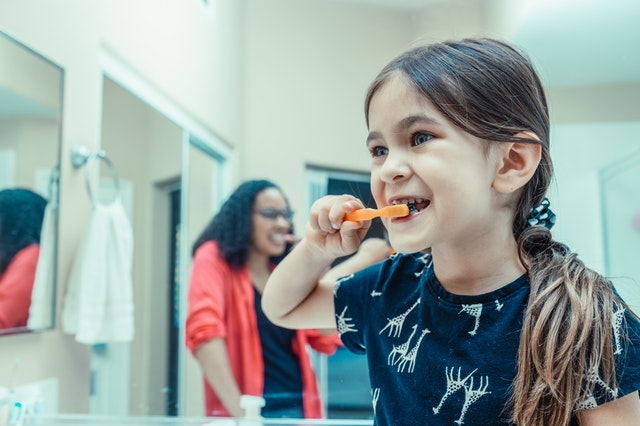Every child goes through a series of milestones as they grow up, and one of the most exciting and anticipated moments is the loss of their baby teeth. As a parent or caregiver, it’s important to understand the timeline and process of when kids start losing teeth. This guide will provide you with all the information you need to know about this natural and fascinating aspect of childhood development.
When do Kids Start Losing Teeth?
The age at which children start losing their teeth varies from person to person. Some lose their first tooth at the age of 3, while others don’t lose theirs until they are 6 or 7.

However, there is a general timeline that can be used as a guideline for when kids should start having regular dental visits:
- 6 months – 1 year: Regular dental visits every six months.
- 1-2 years: Regular dental visits every 12-18 months.
- 2-3 years: Regular dental visits every 24-36 months.
- 3-4 years: Regular dental visits once per year
Signs that Your Child is About to Lose a Tooth
- Loosening of the tooth: One of the first signs that a tooth is ready to come out is when it becomes loose. The tooth may wiggle slightly when touched or when your child eats or brushes their teeth.
- Gaps between teeth: As the permanent teeth start to push through the gums, you may notice gaps between your child’s teeth. This is a normal part of the process and allows room for the new teeth to emerge.
- Slight discomfort: Some children may experience mild discomfort or tenderness around the area of the loose tooth. This is usually temporary and can be relieved with over-the-counter pain relievers or cold compresses.
- Change in tooth color: The baby tooth may appear slightly darker or grayish as the root begins to dissolve and the permanent tooth prepares to emerge.
How to Keep Your Kids’ Teeth Healthy
The most important thing you can do for your child is to brush their teeth twice a day. It is crucial that parents teach their kids how to brush and floss their teeth.
When it comes to brushing, it is recommended that parents start with pea-sized amount of toothpaste and work up to a full-size amount. If you are still having trouble getting your child to brush, try out different techniques or games in order to get them interested in this important habit.
It’s also helpful if you show your children how to use dental floss, as it can help remove plaque from hard-to-reach areas such as between the teeth and under the gum line.
The Order of Tooth Loss
It’s helpful to have a general understanding of the order in which children typically lose their baby teeth. Although there may be some variation, the following sequence is the most common:

- Lower central incisors (bottom front teeth)
- Upper central incisors (top front teeth)
- Lower lateral incisors (teeth on either side of the bottom front teeth)
- Upper lateral incisors (teeth on either side of the top front teeth)
- First molars (back teeth used for grinding)
- Canines (pointed teeth next to the lateral incisors)
- Second molars (back teeth)
Why Do the First Two Baby Tooth Fall Out So Early?
First two baby teeth usually fall out before the third tooth comes in. This is because the first two are replaced by permanent teeth, which are bigger and stronger than baby teeth.
The reason why this happens is because the jaw bones grow faster than the rest of the body, meaning that they can accommodate more space for these new permanent teeth to fit in. In addition to this, there is a difference in size between an adult tooth and a baby tooth – adults have a much bigger root compared to those of babies.
How Can I Prepare for Your Child’s First Loose Tooth?
- Educate yourself: Learn about the typical age range for losing baby teeth and the signs that indicate a tooth is ready to come out.
- Encourage good oral hygiene: Teach your child the importance of brushing their teeth twice a day and flossing regularly to maintain healthy gums and teeth.
- Talk about the tooth loss process: Have open and positive conversations with your child about losing teeth to alleviate any fears or anxieties they may have.
- Stock up on dental supplies: Have extra soft-bristle toothbrushes and child-friendly toothpaste on hand to make brushing comfortable and enjoyable for your child.
- Create a tooth-losing tradition: Discuss with your child how they would like to celebrate their first lost tooth, whether it’s through a visit from the Tooth Fairy or a special family tradition.
- Prepare a tooth-keeping container: Find a small, clean container where your child can store their lost teeth safely until the Tooth Fairy arrives.
- Offer gentle encouragement: Remind your child to wiggle their loose tooth gently and let them know that it’s a normal and exciting part of growing up.
- Be prepared for discomfort: Have some over-the-counter pain relievers, like children’s ibuprofen or acetaminophen, available in case your child experiences any mild discomfort during the tooth loosening process.
What Kind of Toothpaste Should You Use on Your Kids’ Teeth?
Toothpaste is a necessary item for every child’s daily routine. There are many different types of toothpaste available in the market today, but which one should you use?

The best toothpaste for toddlers is one that they enjoy using and doesn’t have an overwhelming taste. Many parents find that their children like Colgate Kids toothpaste because of its fruity flavor and fun characters. Another popular choice is Tom’s of Maine Children’s Toothpaste because it has a mild mint flavor that kids love.
Parents should also consider the ingredients in the toothpaste they choose to use on their children. If you want your child to brush for longer than two minutes, then you should select a toothpaste with fluoride because it prevents cavities and strengthens teeth.
What Should Your Child Do After Their Tooth Falls Out?
After your child’s tooth falls out, it’s important to guide them on what to do next. First, they should gently rinse their mouth with water to ensure it’s clean. If there is any bleeding, they can bite down on a clean piece of gauze or a damp cloth to help stop it. It’s advisable not to brush the area immediately after the tooth loss to avoid irritation. Your child can continue to eat soft foods and avoid chewing on the side where the tooth came out. Encourage them to place the tooth in a small container or envelope for safekeeping, especially if they are excited about the Tooth Fairy’s visit. Remind your child to maintain good oral hygiene by brushing their teeth gently and flossing regularly, taking care around the gap where the tooth was lost.
FAQ’s about Kids Losing Teeth
FAQ 1: Is it normal for a child to lose their teeth early?
Yes, it is normal for some children to start losing their baby teeth earlier than others. As mentioned earlier, the typical age range is between four and eight years old, but individual variations exist. If you have concerns about your child’s tooth loss timeline, it’s best to consult with a pediatric dentist.
FAQ 2: What should I do if my child’s tooth is not coming out?
If a loose tooth refuses to come out on its own, it’s generally best to let nature take its course. However, if the tooth remains stubbornly in place and starts causing discomfort or interfering with the growth of the permanent tooth, it may be necessary to consult a dentist who can assess the situation and recommend the appropriate course of action.
FAQ 3: Should I encourage my child to wiggle their loose tooth?
Wiggling a loose tooth can be a fun and exciting activity for children. However, it’s essential to let your child take the lead. Encouraging them to wiggle their loose tooth gently with clean hands or their tongue can help speed up the natural process. Avoid pulling or twisting the tooth forcefully, as this can cause pain or potential damage.
FAQ 4: How long does it take for a permanent tooth to grow after a baby tooth falls out?
After a baby tooth falls out, it usually takes a few weeks or months for the permanent tooth to grow in its place. The timing may vary, depending on the individual child’s dental development. It’s crucial to continue practicing good oral hygiene during this period to maintain healthy gums and encourage the proper growth of the permanent teeth.
FAQ 5: What should I do if my child loses a tooth prematurely due to an accident?
If a tooth is knocked out prematurely due to an accident, it’s crucial to act quickly. Rinse the tooth gently with water, taking care not to remove any attached tissues. Try to place the tooth back in its socket, if possible, and have your child bite down on a clean cloth to hold it in place. If reinsertion is not feasible, place the tooth in a container with milk or a tooth preservation solution and seek immediate dental care.
FAQ 6: What is the role of the Tooth Fairy in this process?
The Tooth Fairy is a beloved character in many cultures who visits children when they lose their baby teeth. The Tooth Fairy takes the tooth left under the child’s pillow and leaves a small gift or monetary reward in exchange. While the Tooth Fairy doesn’t play a biological role in the process of losing teeth, it can add an element of excitement and fun to this milestone in a child’s life.
Conclusion
Losing baby teeth is an essential and natural part of childhood development. While the process may vary from child to child, understanding the general timeline and signs can help parents and caregivers navigate this phase with ease. Remember to promote good oral hygiene practices and consult with a dentist if you have any concerns about your child’s tooth loss journey. With proper care and attention, your child will have a healthy and beautiful smile for years to come.

